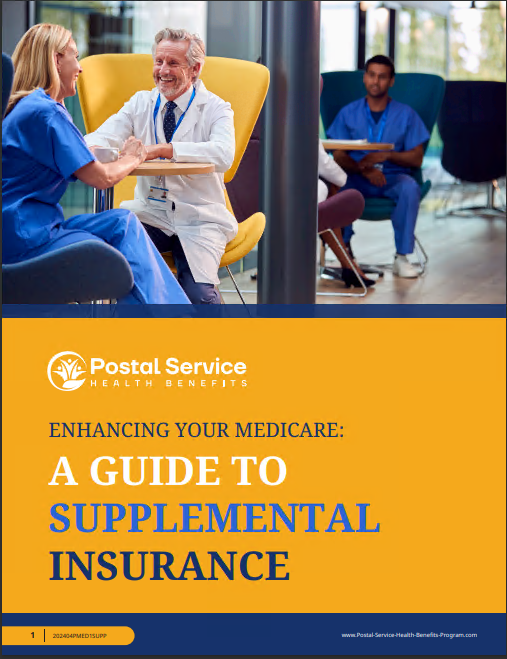Key Takeaways:
- The Postal Service Health Benefits (PSHB) program impacts retirement benefits for postal employees, requiring them to navigate new health plan options.
- Understanding how to transition and prepare for the PSHB changes is essential for both retirees and those nearing retirement.
Already Retired or Nearing Retirement? Here’s How the New PSHB Could Affect Your Benefits and What You Need to Prepare For
If you’re a postal employee who’s already retired or approaching retirement, you’ve likely heard about the changes in the Postal Service Health Benefits (PSHB) program. This new initiative is set to impact many aspects of health coverage for retirees and those nearing retirement. It’s essential to understand how these changes could affect you and what steps you need to take to prepare effectively. By doing so, you can ensure you receive the best coverage and avoid unexpected costs.
What Is the PSHB Program?
The PSHB program is a new initiative introduced as part of broader federal changes to postal employee health benefits. It’s designed to align more closely with Medicare, providing postal retirees and employees a coordinated approach to healthcare coverage. As it takes effect, the program will replace the Federal Employees Health Benefits (FEHB) program for postal workers and retirees, impacting their benefits.
The transition to PSHB aims to streamline healthcare access and provide cost-effective options that integrate with Medicare for those eligible. If you’re already retired or nearing retirement, understanding the PSHB is crucial because it could change how you access and pay for your healthcare benefits.
How Will PSHB Affect Retirees?
Will I Need to Switch My Health Plan?
Yes, most postal retirees will need to transition from their current FEHB plan to a PSHB plan. This change is mandatory for those already enrolled in FEHB and eligible for Medicare. As a retiree, you’ll need to review your new options under PSHB and decide which plan aligns best with your healthcare needs and financial situation.
The shift may require enrolling in Medicare Part B if you haven’t already. Medicare Part B covers outpatient services, which will work in conjunction with the PSHB plan. If you do not enroll in Part B when required, you could face penalties or a loss of some PSHB benefits. Therefore, staying proactive about these changes is vital.
Will My Costs Change?
Your healthcare costs could change under the PSHB program, particularly if you need to enroll in Medicare Part B. Although specific plan prices and benefits aren’t discussed here, it’s important to know that PSHB plans are designed to complement Medicare coverage. This integration may reduce out-of-pocket costs for services covered by both Medicare and PSHB. However, costs can vary, and retirees must compare the available plans to find the best fit for their financial situation and healthcare needs.
What If You’re Nearing Retirement?
If you’re still employed but nearing retirement, the upcoming shift to PSHB might seem overwhelming. However, preparing early and understanding the implications can make the transition smoother. Here’s what you should consider:
Do You Need to Enroll in Medicare?
For postal employees nearing retirement age, enrolling in Medicare Part A and B will likely become a necessary step under the PSHB. Medicare Part A (hospital insurance) is usually premium-free if you have paid Medicare taxes, but Part B (covering doctor visits and outpatient services) has a monthly premium. Ensuring you enroll on time helps prevent late enrollment penalties and ensures your PSHB coverage works seamlessly with Medicare.
As you approach retirement, review the enrollment periods for Medicare to align them with your retirement timeline. Understanding the coordination between PSHB and Medicare can help you plan financially and avoid unexpected costs.
How Should You Prepare for the Transition?
-
Evaluate Your Current Coverage: Compare your current FEHB benefits with the new PSHB options. Understanding the differences will help you anticipate how your coverage might change and what you might need to do to maintain the level of benefits you currently enjoy.
-
Plan for Medicare Enrollment: If you’re not yet eligible for Medicare, plan when you will enroll. Aligning your Medicare enrollment with your retirement date and the switch to PSHB is crucial for a smooth transition.
-
Consider Your Healthcare Needs: Review your health status and potential future needs. If you have chronic conditions or expect to use healthcare services frequently, select a PSHB plan that offers the most comprehensive coverage alongside Medicare.
Navigating the Enrollment Process
What Are the Key Deadlines?
The transition to PSHB comes with specific deadlines, especially for those nearing retirement or becoming eligible for Medicare. You must stay informed about these dates to avoid gaps in coverage or penalties.
- Medicare Initial Enrollment Period: This begins three months before you turn 65 and ends three months after your 65th birthday. It’s crucial to sign up for Medicare during this period if you plan to retire and switch to PSHB.
- PSHB Enrollment Period: This is typically aligned with the annual open season for federal benefits, but additional details will be provided to postal employees as the transition approaches.
Where Can You Get Assistance?
If you find the enrollment process confusing or have questions about your specific situation, several resources are available:
- Human Resources (HR) Department: Contact your HR department for guidance on the steps required to switch from FEHB to PSHB and how to enroll in Medicare.
- Licensed Insurance Agents: While specific plan recommendations aren’t available here, licensed agents can offer guidance on how PSHB and Medicare coordinate. They can help you choose the best option based on your health status and budget.
Preparing Financially for the Transition
What Costs Should You Anticipate?
Transitioning to PSHB, particularly if it requires enrolling in Medicare Part B, may involve new premiums or out-of-pocket expenses. Medicare Part B comes with its own monthly premium, and while PSHB plans aim to reduce overall costs by integrating with Medicare, you must budget for this additional expense.
How to Budget Effectively
-
Calculate Medicare Part B Premiums: Understand how much you’ll pay for Medicare Part B based on your income. Higher-income individuals may face higher premiums, so planning ahead can prevent surprises.
-
Compare Plan Options: Within PSHB, plans will have varying premiums and coverage levels. Review each option to find one that balances cost with your expected healthcare needs. It may be beneficial to select a plan that offers robust coverage, even if it has a higher premium, to save on out-of-pocket expenses.
Tips for Staying Informed
Why Is Staying Updated Important?
The transition to PSHB represents a significant shift in how postal retirees and employees nearing retirement will manage their health benefits. As policies evolve, and new details become available, staying informed is crucial to making the best decisions for your health and financial future.
How Can You Stay Updated?
- Official USPS Communications: Pay attention to newsletters and official announcements from USPS regarding the PSHB transition. These will provide the most accurate and timely information about enrollment dates and plan options.
- Online Resources: Government websites like CMS.gov offer extensive information on Medicare enrollment, and how it integrates with other plans, including PSHB.
- Workshops and Seminars: Attend any informational sessions provided by USPS or Medicare experts to understand the intricacies of the transition and your options.
Preparing for Your Future with PSHB
Navigating the shift to the PSHB program is crucial for postal retirees and employees nearing retirement. By planning ahead, understanding Medicare enrollment requirements, and evaluating available options, you can make informed decisions that protect your health and financial well-being. Take the time to review all available information and resources to stay ahead of the changes and maintain the coverage you need during retirement.







